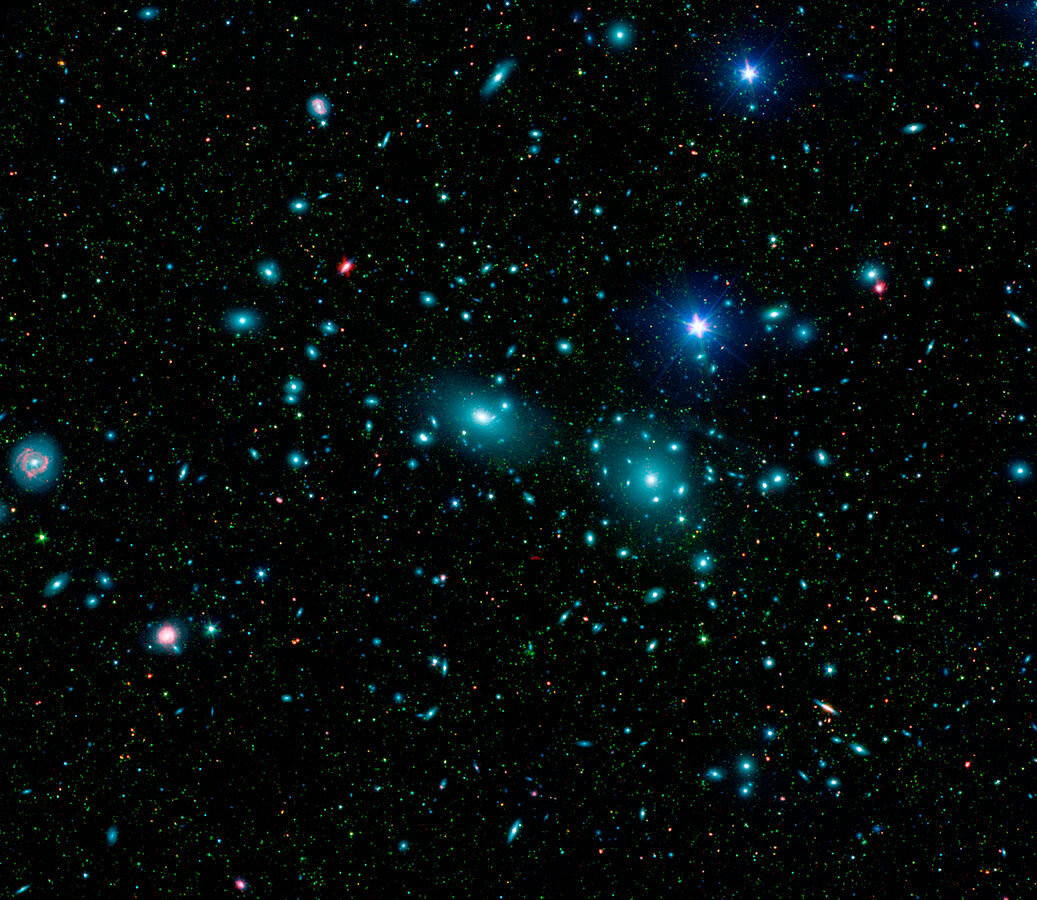
Using India’s AstroSat spacecraft, astronomers have investigated a central field of a cluster of galaxies known as the Coma cluster. Results of the study, presented in a paper published September 13 on arXiv.org, deliver important insights into the properties and nature of this galaxy cluster.
Galaxy clusters contain up to thousands of galaxies bound together by gravity. They are the largest known gravitationally bound structures in the universe, and could serve as excellent laboratories for studying galaxy evolution and cosmology.
At a distance of about 321 million light years, the Coma cluster (also known as Abell 1656) is one of the richest and the most well-studied clusters of galaxies in the nearby universe. It contains more than 1,000 galaxies and its central region is dominated by two supergiant elliptical galaxies, namely: NGC4874 and NGC4889.
In order to shed more light on the properties of this cluster, a team of astronomers led by Smriti Mahajan of the Indian Institute for Science Education and Research in Mohali, India, has observed it with AstroSat. For this purpose, they used mainly the satellite’s Ultraviolet Imaging Telescope (UVIT) to perform far ultraviolet study of the central region of the Coma cluster.
“We present analysis of the far ultraviolet (FUV) emission of sources in the central region of the Coma cluster (z = 0.023) using the data taken by the UVIT aboard the multi-wavelength satellite mission AstroSat,” the researchers wrote in the paper.
First of all, the team examined UVIT’s deep far ultraviolet image of the Coma cluster’s central field (a region with a radius of approximately 2.3 million light years from the cluster’s core) and detected more than 1,300 sources. It was noted that 852 of these sources were identified as galaxies, 114 as stars, and three of them as quasars (one of them is the farthest object observed by the UVIT so far). The nature of the remaining sources is yet to be determined.
The study found that most of the brightest galaxies identified with UVIT are members of the Coma cluster. Moreover, it turned out that many of the 852 galaxies showcase an unconventional morphology in far ultraviolet. For instance, the galaxy designated GMP 2910, which exhibits a spectacular narrow tail, assumed to be formed by a dwarf galaxy or gas cloud that was disrupted due to ram-pressure stripping by the intracluster medium, or tidal forces.
The astronomers suppose that in general the sources identified by UVIT that showcase a distorted morphology, may have recently entered the Coma cluster, and therefore are undergoing stripping events under the influence of the cluster-related environmental mechanisms.
“All the distorted sources are likely to have fallen into the cluster recently, and hence have not virialized yet,” the authors of the paper explained.
They added that to the best of their knowledge, their study is the first investigation of a galaxy cluster field being carried out with the UVIT data. https://phys.org/news/2022-09-center-coma-cluster-explored-astrosat.html








Recent Comments